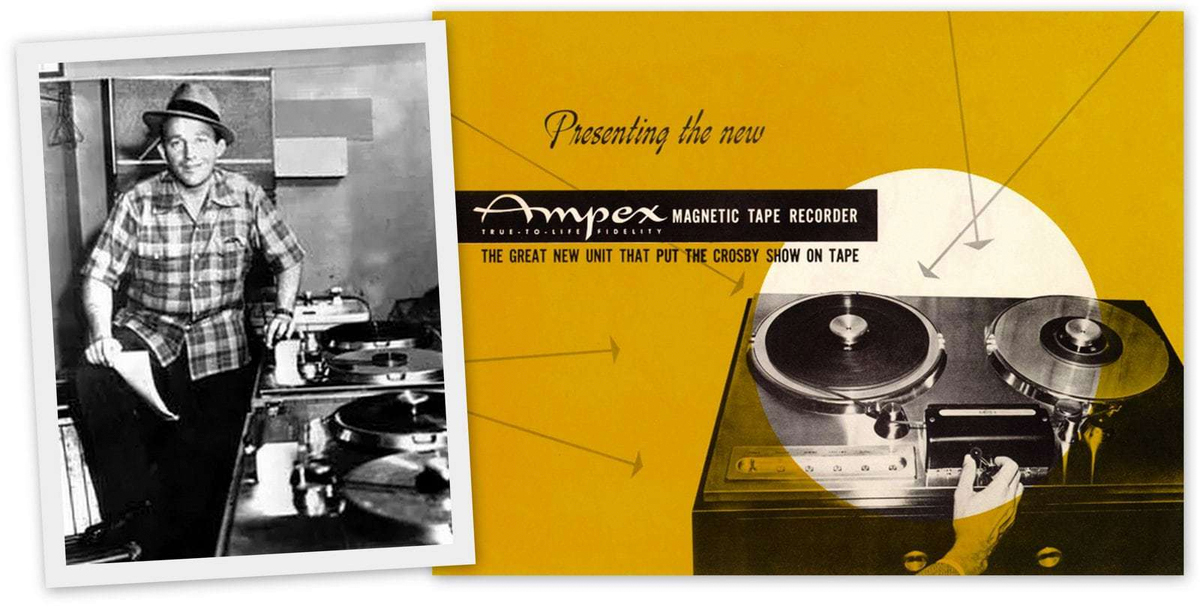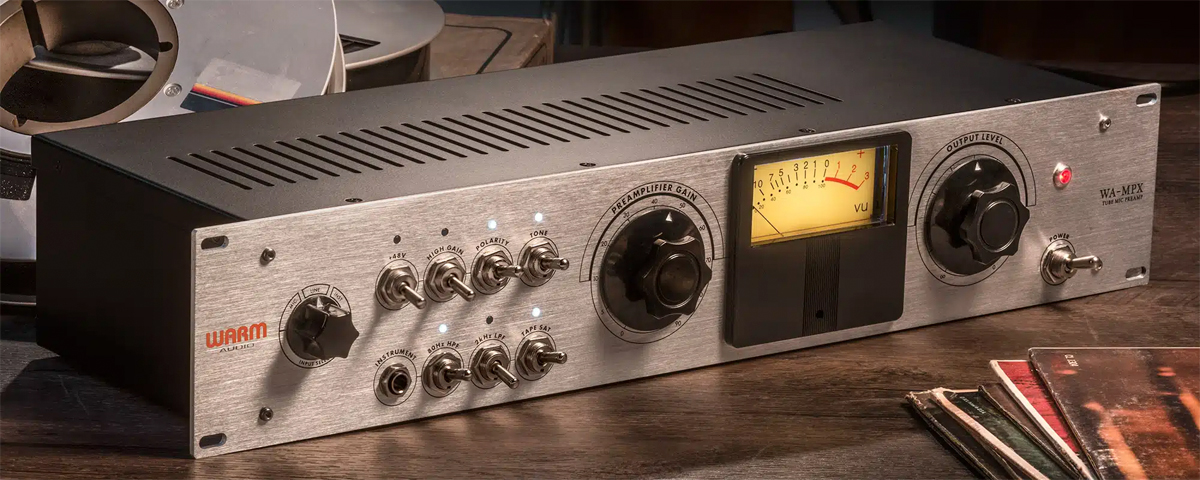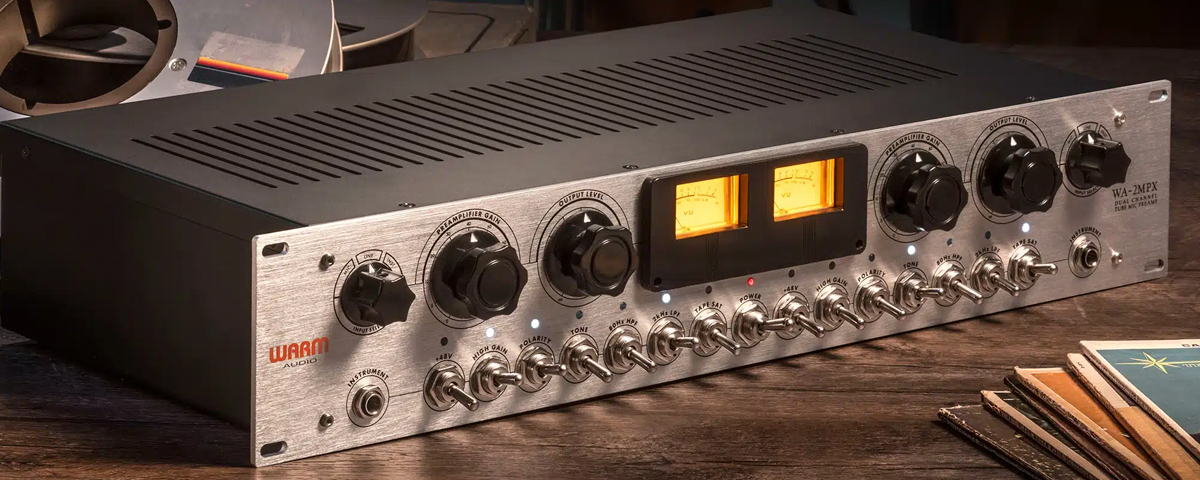Warm Audio WA MPX & WA 2MPX
Countless hits were recorded using Ampex tape recorders and their characterful tube input stages. These preamps promise that legendary sound..
Warm Audio’s latest releases, the WA MPX single channel tube microphone preamplifier and its two channel companion the WA 2MPX, are inspired by an Ampex tube based microphone preamplifier that, in its various incarnations, contributed to the sonic signature of a significant number of iconic 1950s and 1960s studio recordings, in particular from the United States.
A few history…
From the late 1940s into the early 1960s, the California based Ampex Electric and Manufacturing Company designed and manufactured professional tape recorders, with tube based audio electronics. In 1950, Ampex introduced the Model 300 and continued to develop its tube based preamplifiers over the years, introducing the 350 in 1953 and the 351 in 1958. The 351, whose influence is evident in the external appearance and internal circuitry of Warm Audio’s MPX and 2MPX, was a very different beast to its predecessor, in that PCBs replaced point to point wiring and 12AX7 and 12AT7 tubes displaced the older unit’s metal envelope tubes. In addition, the 351 was fitted with an internal power supply, as opposed to the large external version that powered the 350, saving both weight and cost.
As these tube based Ampex audio recorders were scrapped in favour of their solid state replacements, a number of studio engineers began to use the 300, 350 and 351 preamplifiers as standalone mic preamps — a trend that was repeated later with, for example, microphone preamplifiers from the Neve desks that had lost out to SSL consoles. However, unlike Neve preamps, which are relatively easy to reconfigure or reproduce, reconfiguring the Ampex preamps requires a more than passing knowledge of tube electronics and a healthy respect for potentially lethal voltages. Thus, these units have remained scarce and expensive, and have flown under the RADAR of many musicians and engineers.

Outside & In
With their 2U silver front panels and black graphics, black control knobs and black VU meter housings, both the MPX and the 2MPX certainly look the Ampex part. However, the presence of the MPX’s bank of eight chunky toggle switches (seven for control, plus power on/off) and the 2MPX’s line of 15 (two sets of seven control switches, separated by power on/off in the centre), all of which have individual LEDs that illuminate when a function is active, indicate that these units are much more than mere recreations. Across the two units, the channel controls, I/O connectors and metering are identical. On the MPX, there is plenty of room on the front panel between controls. And, despite the doubling of population density on the 2MPX, reducing the size of both meters and control knobs has allowed Warm Audio to retain a similar feeling of space on that unit too.
There are lots of toggle switches on the front panels, and most control their associated functions using relays on the inside. Controlling the signal path through the channel, a three position rotary switch selects between the XLR balanced microphone, TRS jack balanced line and the unbalanced front panel instrument inputs. A Preamplifier Gain control, scaled from 0 90, sets the amount of tube gain applied to the input signal, and an unscaled Output Level control, acting as a 600Ω output impedance attenuator, adjusts the level of the signal leaving the channel and gives you the ability to increase preamp gain to saturate the signal without overloading the input of the next device in your signal chain.
All other front panel channel functions are switched, with the actual switching being carried out by relays on the channel PCB. 48V phantom power and polarity are present as you’d expect, with gently sloping high pass and low pass filters, whose corner frequencies at 80Hz and 2kHz respectively are welcome, and unexpected, additions. The remaining three switches deliver facilities that I don’t recall having come across previously on a studio microphone preamp. The first of these is the High Gain switch that brings in 20dB of clean gain, increasing the maximum gain available for low output microphones and low level sources from 70 to 90 dB. Then there’s the Tone switch, which reconfigures the input step up transformer from a 1:9 turns ratio to a higher 1:18 ratio, decreasing the channel input impedance from 600Ω to 150Ω in the process. Finally, there’s Tape Sat, which inserts an emulation of magnetic tape saturation.
The PCBs, components, layout and construction of the hand assembled MPX and 2MPX are all of a very high standard with not an integrated circuit in sight. The channel cards (one in the MPX and two in the 2MPX) are all identical, their major landmarks being the seven 12V relays that are activated by the front panel switches, the three tubes (each in individual screening cans), and the input and output Cinemag transformers, which have been custom wound to the original vintage specifications. Because of where the input transformer sits on the PCB I couldn’t make out its model number, but the output transformer is a CM 351BPC, the 351 denoting the fact that this transformer has the extra winding, first seen on the Ampex 351, which feeds the negative feedback loop that helps to reduce distortion in the 12AU7 push pull output stage. On both the MPX and the 2MPX, toroidal mains transformers feed chunky analogue power supplies, whose main task is to deliver a 300V B+ supply to the three tubes.
The rear panel audio I/O are provided on both XLR and TRS, to make connection to your studio easy using your existing cables.The skeleton of the channel signal path is a familiar one: from input transformer to preamplifier, then phase inverter to push pull amplifier to output transformer. The step up microphone input transformer is a little unusual in that activating the Tone function switches its input impedance and secondary winding ratio from 600Ω/1:9 to 150Ω/1:18. The 150Ω/1:18 setting approximates to the microphone input transformer setup in the original 351 (150Ω/1:15). Activating the Tone function also increases the step up gain through the input transformer from 17dB at the 1:9 ratio to 23dB at the 1:18 setting.
As in the 351, the balanced line input signal runs through a resistor network that pads it down to microphone level, before it reaches the microphone input transformer. This arrangement, which routes the line signal through the microphone preamplifier and its high ratio input transformer was, apparently, not always considered optimum in a sonic sense by recording engineers back in the day. This appears to have led to many major studios either bypassing the 351’s mic preamp when using the balanced line input or using the 351’s unbalanced line input, which bypassed the microphone transformer. The front panel instrument input, which is situated where the original 351’s headphone jack sat, is the MPX’s equivalent to that unbalanced input.
All the tubes in the signal path (two 12AX7s and one 12AU7) are twin triodes, which indicates that they are each made up of two identical triodes sitting in the same glass envelope. The first 12AX7 acts as the preamplifier stage, the second is the first tube in the output stage. The latter’s two triodes make up the phase inverter that drives the 12AU7, whose triodes are configured as the push pull output stage. In normal operation, only one triode in the first 12AX7 is active. Engaging High Gain brings that tube’s second triode into circuit, resulting in an extra 20dB of clean gain, which increases the maximum gain available through the MPX for low output microphones and low level sources from 70 to 90 dB.
Finally
The Warm Audio MPX and 2MPX are, to my mind, superb and rather special microphone preamplifiers. Unless you’re really into the sonic signature of old school recording, neither are likely to be your ‘one and only’ mic/line preamp. But of course most of us already have capable ‘vanilla’ preamps on our interfaces, and when you’re looking for a way to enhance the sound of a source, either as you’re recording it or after the fact, be it drums, bass, vocals, keyboards, synths, brass or whatever, the MPX and 2MPX both offer immediately accessible, intuitive and very controllable means of adding character, warmth and weight. You can drive their input transformers hard, slam an extra 20dB into their phase inverters to ensure that the push pull 12AU7 output tubes saturate their output transformers, and still keep the signal going into the next stage of your chain at the level it needs to be. What you do and what you get is down to your taste, creativity and ears.
If you're looking for a preamp with a vintage vibe or one that can add color and character to any signal passing through it, you definitely need to try the MPX and 2MPX from Warm Audio. At least one of these units won't be returning to Athens Pro Audio!
AthensProAudio Team ©
















